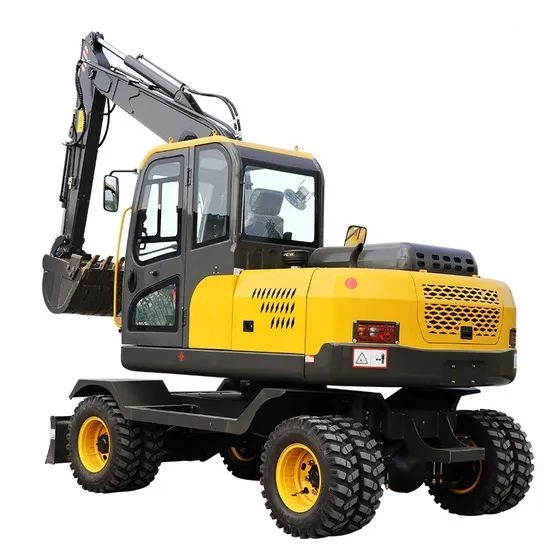Whether a wheeled excavator or a tracked excavator offers higher cost - effectiveness depends on specific usage scenarios and needs. If working on hard surfaces such as urban roads and requiring frequent relocation, wheeled excavators are more cost - effective; if carrying out large - scale engineering operations in complex terrains like muddy and rugged areas, tracked excavators are more cost - effective. The following is a detailed analysis:

Wheeled excavators:
Advantages: They are flexible and mobile. There is no need to rely on other means of transportation for relocation; they can travel quickly on their own, which can effectively save relocation time and transportation costs. Their manufacturing cost is relatively low, fuel consumption is also small, and the use cost is low. In addition, rubber tires cause little damage to the ground surface, making them suitable for operations in places with requirements for ground protection, such as urban lawns and highways. Moreover, the tires have a shock - absorbing and buffering function, so the driving experience is relatively good.
Disadvantages: Their passing performance is poor. They are prone to slipping and sinking on muddy and soft ground. Their load - bearing capacity is not as good as that of tracked excavators, their stability is relatively weak, and their digging force and loading capacity are limited. They are generally suitable for lightweight digging tasks.
Advantages: They are flexible and mobile. There is no need to rely on other means of transportation for relocation; they can travel quickly on their own, which can effectively save relocation time and transportation costs. Their manufacturing cost is relatively low, fuel consumption is also small, and the use cost is low. In addition, rubber tires cause little damage to the ground surface, making them suitable for operations in places with requirements for ground protection, such as urban lawns and highways. Moreover, the tires have a shock - absorbing and buffering function, so the driving experience is relatively good.
Disadvantages: Their passing performance is poor. They are prone to slipping and sinking on muddy and soft ground. Their load - bearing capacity is not as good as that of tracked excavators, their stability is relatively weak, and their digging force and loading capacity are limited. They are generally suitable for lightweight digging tasks.
Tracked excavators:
Advantages: They have a large ground contact area and strong off - road capability. They can easily handle harsh working conditions such as muddy areas, wetlands, and mines, and are not easy to get stuck. The chassis is low, and the center of gravity is stable. When performing deep digging operations or large - scale earthwork projects, they can better maintain the balance of the machine body, with high operational safety, and can undertake large - scale and high - intensity digging tasks.
Disadvantages: The traveling speed is slow. Long - distance movement requires relying on flatbed trucks for transportation, which makes relocation inconvenient and costly. Their structure is relatively complex, the manufacturing cost is high, fuel consumption is also large, the later maintenance cost is high, and they cause great damage to the ground surface, so they are not suitable for operations in places with high requirements for ground protection.
Advantages: They have a large ground contact area and strong off - road capability. They can easily handle harsh working conditions such as muddy areas, wetlands, and mines, and are not easy to get stuck. The chassis is low, and the center of gravity is stable. When performing deep digging operations or large - scale earthwork projects, they can better maintain the balance of the machine body, with high operational safety, and can undertake large - scale and high - intensity digging tasks.
Disadvantages: The traveling speed is slow. Long - distance movement requires relying on flatbed trucks for transportation, which makes relocation inconvenient and costly. Their structure is relatively complex, the manufacturing cost is high, fuel consumption is also large, the later maintenance cost is high, and they cause great damage to the ground surface, so they are not suitable for operations in places with high requirements for ground protection.





